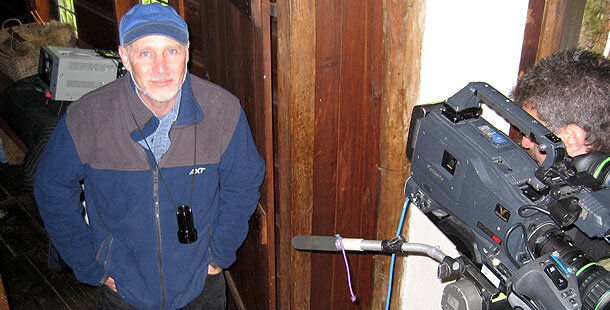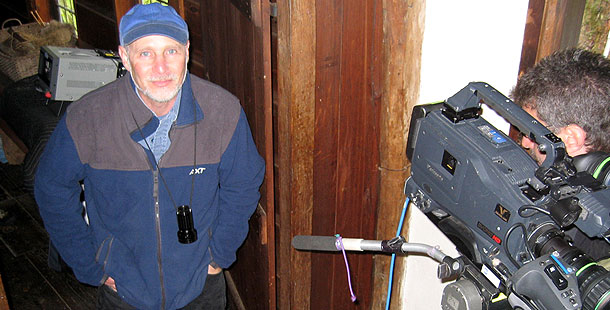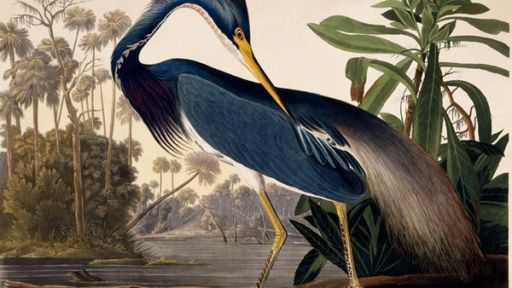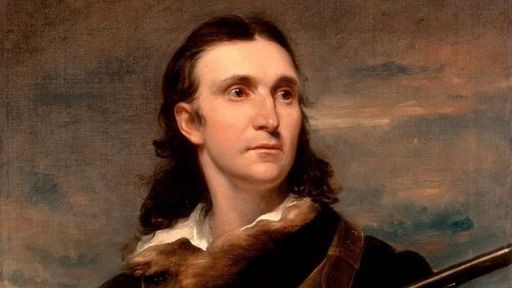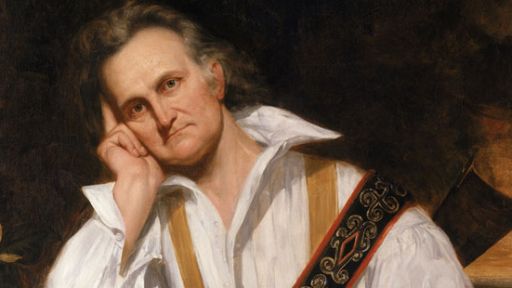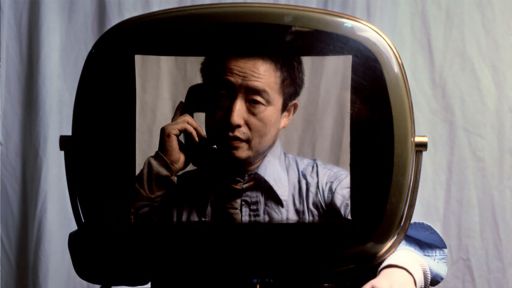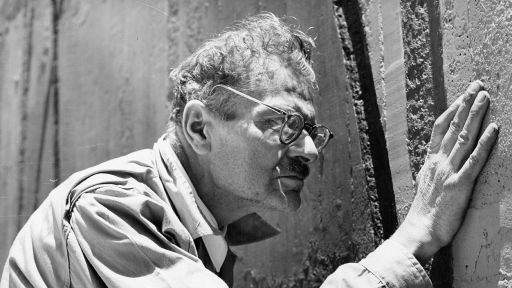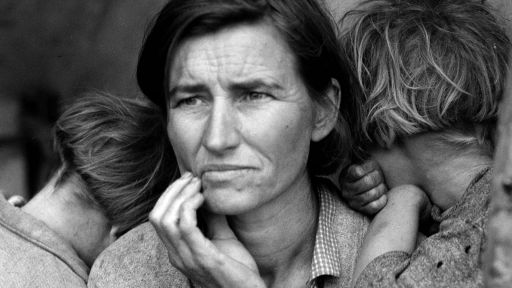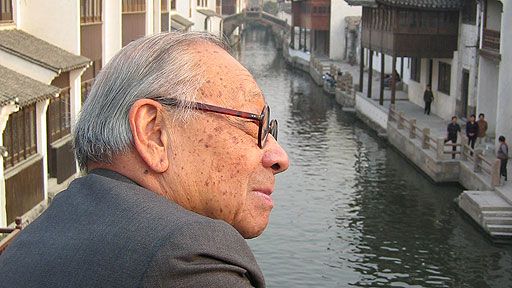Award-winning director Lawrence Hott answers some questions about the making of AMERICAN MASTERS John James Audubon: Drawn from Nature.
Q: You have made many environmental history films, including The Wilderness Idea, Wild by Law and The Harriman Alaska Expedition Retraced. What is it about Audubon that attracted you?
A: Audubon lived at an exciting time in American history. He was an immigrant, a new American at a time when the country was new as well. His paintings reflected how pristine the wilderness was then, and how much wildlife there was. He could hunt freely almost anywhere, feed himself and his family, gather his bird and mammal specimens across the countryside. But he saw all this wildness start to diminish within his lifetime and he worried about it and wrote about it. So he’s an important character in American history, but he is also a dynamic one. My wife and co-producer, Diane Garey, likes to say that her favorite film subject is someone who lived an exciting life, died and along the way took pictures of everything he or she did. There weren’t many photographs of Audubon but we knew there would be something to show, in spite of the fact that he lived most of his life before the time of photography. He left us the legacy of his paintings. When in doubt, we said in the editing room, cut to an Audubon bird painting.
Q: The film conveys just how much of a character Audubon was. Did you feel that you got to know him while making the film?
A: You might think that John James Audubon died about 150 years ago, but while we were producing this film I ran into him everywhere. In Henderson, Kentucky there are Audubon gas stations, Audubon office furniture stores, Audubon Baptist Churches, the Audubon Mobile Home Park. My personal favorite – the Audubon Pawn and Loan, which is particularly apt if you consider that he declared bankruptcy there. When we visited the Oakley Plantation in St. Francisville, Louisiana, where Audubon lived for a time, the bird sounds were almost deafening. It was exciting to know that I was hearing the calls that Audubon heard. I could understand his enthusiasm because the combination of wild birds and stunning landscape was overwhelming.
Q: What were some of the challenges presented in making the film?
A: How do you get dead birds, legally, so you can demonstrate how Audubon posed his subjects? Where do you find a live golden eagle to illustrate one of Audubon’s famous episodes? How do you show the life of a man who lived his most dramatic years before the age of photography? How do you film the smaller birds, the ones that won’t stay still. I’m amazed that Audubon was able to find them, let alone shoot them.
Q: Were there logistical challenges?
A: One odd incident happened when we were trying to get a shot over the Hudson River Parkway of the area where Audubon lived on 155th Street. As soon as we got out of the van with the camera two carloads of cops stopped us because they thought we could be terrorists taking pictures of the George Washington Bridge. We did have a permit to film on the streets so they let us go.
Q: Tell us about the passenger pigeon segment. How did you come up with the idea of using animation?
A: Right from the start we knew we wanted to use animation to illustrate the passenger pigeon story. There are very few images of passenger pigeon hunts from the 19th century but the written descriptions are fantastic, almost science fiction. The idea that billions of birds could darken the sky, that whole towns would feast on pigeon carcasses for weeks, was just perfect for storytelling. But how do you illustrate it? My first thought was to use a charcoal animation technique, the kind that is dreamlike and indistinct. But then I visited the Academy of Natural Sciences in Philadelphia and saw the colorful passenger pigeon bird skins there. And that’s where I had the idea of having the animated pigeons drop into the drawer at the end of the sequence. I called our ace animator, the very talented Amit Sethi, and told him the idea and he insisted on coming to the shoot to make sure that the birds in the drawer were positioned correctly. Then we worked with Amit over several months, refining and redrawing the scenes until they were just right. The way the animated birds drop into the drawer is one of my favorite parts of the film.
Q: How did you devise the beautiful backdrops used for the interviews?
A: Over the years I’ve become very tired of the standard talking head interview look. It takes an enormous amount of time to light an interview well and the result is often just a person sitting in a well-lit living room. I wanted something aesthetically pleasing, original and consistent with the film subject. I also wanted something that would allow us to bring our interviewees to one place. We had people all over the country and it was logistically difficult to get to all those places. So I got the idea of blowing up Audubon prints from scans and putting them on plastic sheets, five feet by nine feet. The backdrops just give a hint of a bird, fuzzy and indistinct, but it sets the right mood.
Q: Was there a difference between filming the original watercolors and working with prints and scans?
A: Shooting the original watercolors at the New-York Historical Society was wonderful. It’s just thrilling to see the originals up close. Roberta Olson, the curator, exudes excitement about the watercolors and artifacts and that comes through in her interview. While we were there we borrowed one of Audubon’s shotguns from the American Museum of Natural History and brought it over to NYHS for the filming. We filmed Olson holding the gun and talking about Audubon and shooting. I held that shotgun and tried to imagine what it would have been like to be in the woods of America in the 1820s and 1830s. Audubon represents a lost time for us, when the country was young and wildlife was, well, wild.
Q: Why did you decide to put the large desk into the film?
A: Roberta Olson told me about the regency desk they have during our interview and she insisted that we film it. Usually furniture is not that exciting; one doesn’t jump for joy at the prospect of putting a desk into a film. But I had seen the desk at the museum before and when I learned that it opened up into the shape of a bird, then I was sold. The trick was to make it interesting and we did that using a series of dissolves as the workers open the desk and display the Audubon double elephant folios. Our editor, Aaron Vega, did a brilliant job putting that scene together.
Q: What was the most beautiful place you filmed?
A: We went to shoot in the Everglades, not so much because Audubon spent a lot of time there, but because a lot of the birds he painted were easy to film there. In the Everglades, cinematographer Allen Moore remembered shooting at the observation tower at the end of Shark Valley for another film. It turns out that after the tram stops running no one ever goes down to the tower, but at sunset the birds come there to roost. Thousands and thousands of ibises, herons, egrets – you name it. The ranger with us had never seen it because he always went home before dusk. All of a sudden they started coming in, low-flying, silhouetted against the setting sun. The noise, as they say, was deafening. It quickly became too dark to film the amazing sight of 25,000 birds roosting.
Q: What is one of your favorite scenes in the film?
A: The first one that comes to mind is the live golden eagle. We needed to illustrate the famous story about Audubon having trouble killing a live golden eagle in a cage. It’s almost an Edgar Allan Poe story. No matter what he does the eagle refuses to die and keeps staring at Audubon, as if he were daring him to try another, more gruesome method. We had to find a live golden eagle and that was surprisingly easy. I just typed “live golden eagle New England” into the search engine and up popped “Wingmasters” in Springfield, Mass., just a half hour away. We had our art department construct a period-looking cage and then cinematographer Stephen McCarthy used a jib to get the fluid movement as we move around the bird. When the scene cuts to Audubon’s portrait of the bird it is really striking. [Ed.note: No birds were actually harmed during filming].
Q: Did you have any trouble gaining access to precious Audubon materials?
A: Museums were very cooperative. The New-York Historical Society, for example, really opened the doors for us. The only thing they asked was that we be very sensitive about using high intensity lights around the watercolors. They only bring out about 40 of the original Audubon watercolors a year because of fears of fading. The real issue for us was getting a copper plate to film so we could demonstrate the printing process with an authentic Audubon plate. The only museum that would accommodate us was the John James Audubon Museum in Henderson, Kentucky. They had a small plate of the greater yellowlegs that had been used for re-strikes before, so they let us take it, but the museum director, Alan Gehret, hand-carried it to and from the print shop at Southern Indiana University. I was a little nervous when cinematographer Michael Chin had to rig lighting and scaffolding from the ceiling. Nothing dropped on the plate and the scene is very beautiful.
Q: How did you come across Walton Ford, the bird artist?
A: One of our consultants, Franklin Burroughs, recommended that we look at his paintings. Ford is an accomplished artist who frequently parodies Audubon in his work. When I called him I was surprised to find out just how much he knew about Audubon. Ford was more than enthusiastic about filming with us; he almost insisted that he show us how Audubon really posed the birds so he could draw them in lifelike positions. We have so much great material from that shoot our editor Aaron Vega put together 12 minutes of it for the DVD extras.
Q: Audubon was an innovative and original artist. How challenging was it portraying his art on the screen?
A: Consider this: the very first plate in The Birds of America, a wild turkey, was over 10 times bigger than the turkey in predecessor Alexander Wilson’s ornithology. That’s why Scotland’s leading engraver, William Home Lizars, greeted Audubon’s work with: “My God I never saw anything like this before!” No one else had either. His birds were bigger, they moved, they flew, and they lived in the real world. The first challenge for us was how to show the enormous size of the paintings. We always had to be conscious of scale. That’s why you see people standing next to the paintings and folios so much in the film. Otherwise the paintings would just fill the TV screen; the size would be meaningless. And then we needed our art historians to explain the action because the film can’t allow the viewer the time to sit and examine each painting.
Q: What is it about Audubon’s personality that attracted you?
A: Audubon was full of contradictions, as we point out right away in the film. He was a great artist, but copied several figures from the work of others, then said he hadn’t. He quietly erased the name of an assistant, who’d made backgrounds, from the bottom of numerous paintings. Even when Audubon was alive a newspaper editorial called his published observations on rattlesnakes and turkey vultures “a pack of lies.” Audubon described dozens of new species, but often screwed it up; as our interviewee Bill Steiner says, sometimes he coined new names for birds that had already been described by others, and sometimes he “created” new species when he encountered common birds with slightly different plumage. But in the end he is still respected as a good scientist, a fine storyteller and a brilliant artist.
Q: What is your favorite Audubon painting?
A: That’s an impossible question to answer. Every time I think I have a favorite I see another one and change my mind. I am drawn, of course, to the larger birds because they are more dramatic. The giant white pelican is stunning. The osprey with the fish in its talons is magnificent. The golden eagle watercolor, the one with Audubon crossing the log in the background is unique because the self-portrait is missing from the print, so it’s a good story. The ivory-billed woodpecker reminds me of the current controversy over whether it is indeed extinct, and the Carolina parrots and passenger pigeons, both extinct, evoke great sadness about what has happened to the nation’s wildlife. If I could afford to buy an original print I would probably choose one of the wading birds, the herons or egrets or the roseate spoonbill. The colors are so vibrant that they light up a room.
Q: What is Audubon’s legacy?
A: His legacy is arguably the most far-reaching of any American visual artist. In 1896, years after his death, women began a crusade against the fashion of the day, which called for plumes on women’s hats and that had enormous consequences. In the Florida Everglades, poachers killed more than 130,000 snowy egrets in one year alone. Some women decided to do something: they began asking their friends to stop wearing plumes. George Bird Grinnell, the famous naturalist, who just happened to study under Lucy Audubon when he was a child, started the Audubon Society and spearheaded a campaign to stop the slaughter. Before long, the campaign became a nation wide movement. So you can see Audubon’s legacy in much of the environmental activism we have today.

